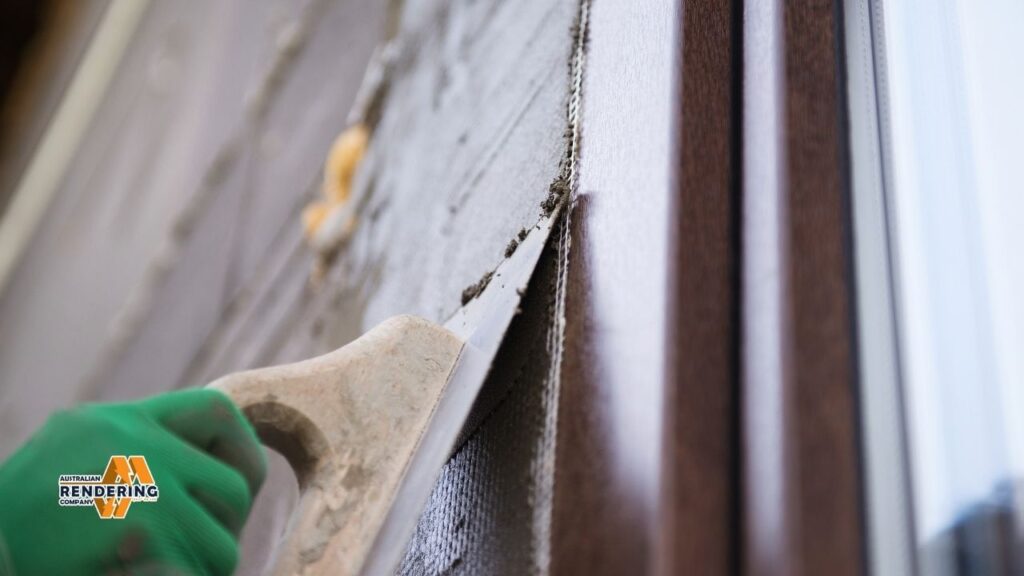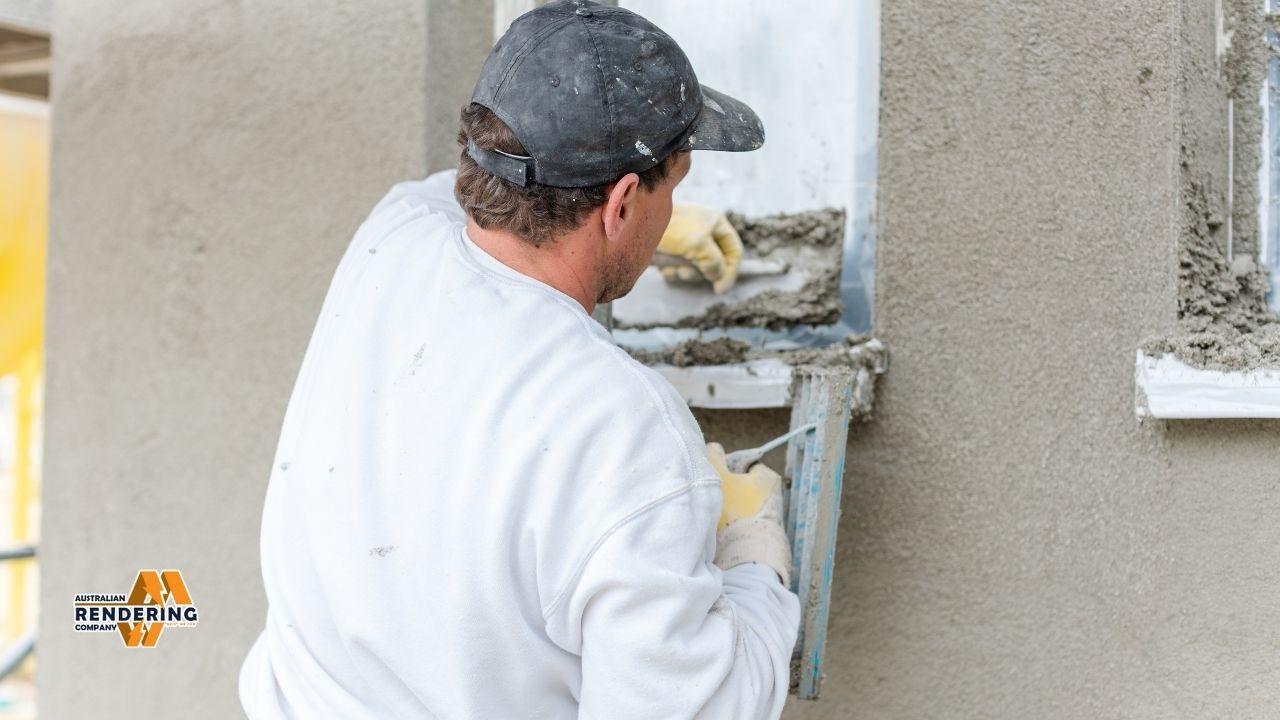As temperatures plummet, many outdoor projects take a back seat. But what about rendering? Can you do it in cold weather? The answer isn’t a straightforward yes or no: there are a few things that go into whether or not you can get a good finish that stands up well and looks good even when the thermometer dips. Read on for everything you’ve ever wanted to learn about rendering in cold weather – from what temperatures you can and can’t render in, to when to hold off in conditions of frost and rain and how you can put the odds of success in your favour.
The Cold, Hard Facts: What to Know About Temperature and Rendering
Temperature is a big factor in the setting and curing time for rendering materials. There is a certain temperature range that the majority of render products require to actually work properly. You can have a few problems when it gets too chilly.

Setting and Curing Issues
Setting is the term used when the mix of a rendering starts to dry. Curing is the phase during which it achieves strength and durability. Freezing temperatures retard both of these processes. This may produce a weaker end product that can be prone to cracking or failing. When water freezes, it expands, and that’s just going to make even bigger messes in the setting render. As a leading Melbourne Rendering Services provider, offering acrylic, cement, and cladding services across Melbourne, Australian Rendering Company knows the effects temperature will have on a render when it cures. Having the right temperature is crucial to any rendering job as they back their workmanship with a 7-year warranty.
Adhesion Problems
In order for render to stick to anything, it must first bond to it. Cool surfaces can prevent the render from adhering properly. If the render is moist, it can freeze on a cold surface and therefore act as a barrier between the render and the wall. This can lead to the render splitting or cracking off at a later time.
Workability Woes
Cold temperatures can also affect the workability of rendering mixes. They can become stiff and difficult to spread, which, in the long run, will make it more difficult to achieve a smooth, even finish. This can require more work and time, and it can also influence the appearance of the overall job.
How Cold Is Too Cold for Rendering?
By and large, the magic number is 5°C (41°F). Most manufacturers of rendering products recommend not using their products under these conditions as well. But this is not a strict rule. Some are designed holistically for cooler conditions, and other variables, like humidity and wind, can be influential, too. And, as always, consult the product data sheet for the particular render you are using.
Frosty Foe: Can You Render in Frost?
Can you render in frost? Absolutely not. Rendering does not get along with frost. When plotting, frost will form on the surface, as it pans out it will leave an icy layer that will prevent the render from adhering correctly. The render can also be damaged by the freeze-thaw process, as water expands and contracts.
The Freeze-Thaw Cycle
A freeze-thaw cycle is where temperatures rise higher and dip below freezing. This pattern can screw over fresh render. Freezing water inside the render expands, blasting it out of the render. This can cause the structure to weaken as the water subsequently freezes and thaws, emptying space in the material. This endless, looping process can easily kill a rendering job.
Rainy Days: Can You Pour In The Rain?
Like frost, there are also big rain challenges. Can you render in the rain? Again, the answer is usually no.
Washout Woes
A rain wash can spread fresh render before it has a chance to set. The former not only results in material waste but also produces an irregular and weak inlet.
Increased Moisture Content
Additional moisture can affect the rendering mix, resulting in a mixture that is weaker and more susceptible to cracking. It can also seal moisture behind the render, causing issues such as mold and wall damage.
Painting at Low Temperatures: Solutions
Despite the difficulties that cold weather can present, it doesn’t necessarily mean a full stop to rendering. Here are a few things you can do to help your chances of success when rendering in the cold:
- Use Cold-Weather Admixtures: Admixtures are special ingredients, which can be added to the rendering mix to alter the characteristics of the mix. Some admixtures were and are made to accelerate setting times during cold weather. Some can even help the mix withstand freezing.
- Surface Preparation is Key: Ensure the render surface is clean, dry and free from frost or ice before you commence working. You probably will have to heat it up a bit to get it to melt.
- Protect the Work Area: By setting up shelters, tarps, or temporary wall tents, you cover the work area and guard it against the elements. This can help to keep the temperature in and deter rain or snow from affecting the green render.
- Check the Temperature and Humidity Levels: Monitor the temperature and humidity very closely. Monitor conditions and adjust your work as necessary using a thermometer and hygrometer.
- Use the Right Rendering Mix: Select a render mix that is designed for cold-weather application. These compounds are usually formulated with proprietary additives to allow for curing properties at low temperature.
Think Outside the Box With Cement Rendering in Winter
Cement render is a blend of cement, sand and water. It is prized for its strength and longevity. In winter, cement render is a good choice for rendering because it survives well with cold weather and damp conditions.
Cement Rendering Benefits:
- Heat and cold protection: One of the greatest benefits of cement rendering is thermal regulation.
- Sturdiness: Cement render is a hard-wearing material that can stand the test of time and weather.
- Water Resistance: It offers decent protection in rain and cold wet weather. It can be used as a rainy umbrella.
- Application: Cement render can be used on most surfaces such as brick, stone and concrete.
Cons of Cement Rendering:
- Cracking: Cement render may crack if not mixed or applied well.
- Weight: It is a heavier render, which may stress the structure.
- Application: Cement render is more difficult to work with and apply than other renders.
Acrylic Rendering And Its Cold Flexibility: A Cold Weather Solution
Acrylic render is composed of acrylic polymers, cement and aggregates. It’s prized for its flexibility and resistance to cracking. In the winter months, acrylic render may be a suitable substitute for the cement render.
Pros of Acrylic Rendering Include:
- Flexibility: Acrylic render is also more flexible than cement render, which means it will “move” before it “cracks”.
- Water Proof: It is highly water resistant as well, with the ability to withstand downpours and wet environments.
- Application: Acrylic render is easier to apply compared to typical cement render; this ultimately leads to a faster task.
Cons of Acrylic Rendering:
- Price: Acrylic render tends to be more expensive than cement render.
- Durability: It isn’t as hard wearing as cement render in extreme conditions.
Additional Cold-Weather Rendering Tips
Here are a few more tips to get you through cold weather rendering:
- Early Start: Get going while it’s still well before noon and the sun is at its warmest.
- Render in Sections: Work in areas no more than a few feet square to prevent the render from drying before it can be finished.
- Keep Your Render Materials Warm: Keep all of your render materials in a warm area.
- Invest in a Trowel Warmer: A trowel warmer will keep your tools at the preferred temperature so you have smooth application.
- Exercise Patience: As cold temperatures can slow down the setting and curing of the render, practice being patient and give enough time for the render to dry fully.
What to Do if Render Freezes
If render freezes before it has had time to set, it may be irreparably damaged and weakened as a result. Here’s what to do if that happens:
- Check the Render: Inspect the render surfaces for cracks, crumbling and other signs of damage.
- Strip Away the affected Render: Carefully strip away any part of the render which has been affected by the freeze.
- Surface preparation: For new render, the surface should be clean and prepared prior to application.
- Re-render: You can add a whole new render coat using the cold-weather rendering tips above.
What’s the coldest temperature you can use to render?
Rendering is recommended at a minimum temperature of 5°C (41°F). Below that, most render products may fail to bond and dry sufficiently to give a strong long-lasting result.
Can render be affected by cold weather?
Yes, render does take longer to set and cure in cold weather. It can also lead to adhesion issues, increased risk of cracking and a render that is more difficult to apply.
How do you render in the cold?
To apply in cold weather, add cold-weather additives, prime the surface and protect it, monitor temperature and humidity, and use a rendering mixture that’s made for low temperatures. Australian Rendering Company offers a selection of rendering products to suit all climates.
Is it possible to render in winter?
You certainly can render in winter, but you will have to take extra measures to ensure you get a good result. This involves using the proper supplies, securing the work area, and keeping an eye on the weather.
What if render gets wet?
Rain can ruin wet mortar, sparing you an irregular soft surface. It can also add humidity to the equation, which can cause the mix to be more prone to cracking.
Can I render in the rain?
No, it is usually not wise to stucco in the rain. Rain can damage fresh render and even stop it from setting.
At what temperature is it too cold for rendering?
For use with standard formulations, almost all professionals recommend 5°C (41°F) as the maximum temperature for proper application, and some even lower. Special care and materials are necessary for such low temperatures.
Can you render in winter?
Yes, you can render in winter — but it requires some attention to when and how you do it. You have to account for things like temperature, frost and rain. By adhering to the above advice, you can substantially improve your chances of rendering successfully in cold conditions.




